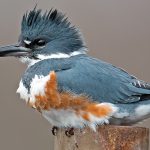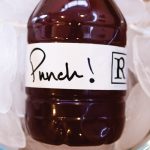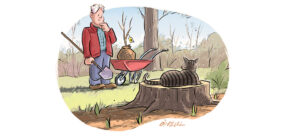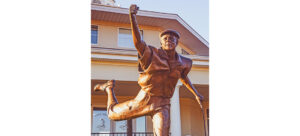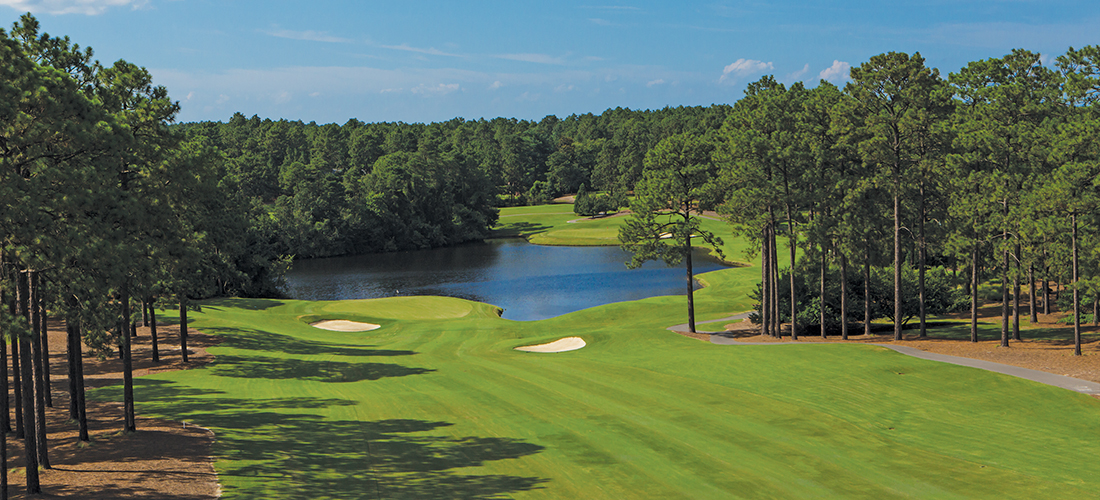
Junior Achievement
Another national championship in the Sandhills
By Lee Pace
The second time the USGA gathered the best boys under age 18 to compete for a national championship was 1949, and the venue was Congressional Country Club in Bethesda, Maryland. Gay Brewer and Mason Rudolph traveled together from their homes (Brewer from Kentucky and Rudolph from Tennessee) and roomed together that July week at Georgetown University. Each advanced through his bracket to the championship match, with Brewer, 17 years old, taking a leisurely 6-and-4 victory in the championship match over Rudolph, who was two years his junior.
That week cast the die for both players. Each won multiple times on the PGA Tour, with Brewer collecting the 1967 Masters and playing in two Ryder Cup matches. Rudolph won the Junior Amateur the following year, collected the 1956 Western Amateur and won five times on the pro tour.
Since then, the Junior Amateur has staged an annual audition for many elite players to come, among them Johnny Miller, Eddie Pearce, Gary Koch, David Duval, Tiger Woods, Hunter Mahan and Jordan Spieth.
“That was the first time I’d ever experienced the thrill and the chase of a USGA event,” Woods says of his three straight wins from 1991-93.
“You look at the names on the trophy and know what kind of company you’re in,” says Mahan, the 1999 victor.
“It was not as much about me winning as it is being a part of the fraternity with those guys,” adds Spieth, the champion in 2009 and 2011.
The U.S. Junior Amateur makes its debut in the golf-rich Sandhills in July with the 73rd rendition being staged at the Country Club of North Carolina, July 19-24. Yet another domino falls in the universe of elite competitive golf for Moore County, adding to the largesse of U.S. Opens (three already with one set for 2024 at Pinehurst No. 2) and U.S. Women’s Opens (three at Pine Needles with a return engagement in 2022, and one at Pinehurst No. 2). There has been a Ryder Cup, a U.S. Senior Open and three U.S. Amateurs.
And this national championship continues CCNC’s heritage of every decade or so opening its doors to some variety of high-profile tournament. Since its opening in 1963, the club has been the venue for the PGA Tour, the U.S. Amateur, the U.S. Girls Junior, six Southern Amateurs, a national father-son tournament now more than half a century old, and a host of statewide and regional competitions.
Jack Nicklaus, Hal Sutton, Ben Crenshaw, Tom Kite, Webb Simpson and Scott Hoch have collected trophies at the 36-hole golf haven and residential community located off Morganton Road, halfway between Pinehurst and Southern Pines.
“The club takes a lot of pride in all the events it’s hosted over the years — from USGA national championships to the Carolinas Golf Association events,” says Robbie Zalzneck, a USGA staff administrator and also a CCNC member. “It’s a club that likes to give back. The members have rallied behind the Junior Am. Opening the club up to competitive golf has always been in its DNA.”
CCNC was designed in tandem by Ellis Maples and Willard Byrd and opened in 1963. It was one of the original members of Golf Digest’s 100 Greatest Golf Courses and was site of the 1971 and 1972 Liggett & Myers Match Play Championship on the PGA Tour (won by Dewitt Weaver and Nicklaus) and the 1980 U.S. Amateur (won by Sutton). It has remained among the best courses in the state, and in 2021 was listed No. 16 in North Carolina in both Golf Digest and GOLF magazine rankings of the best courses in every state.
The original course was so popular the club retained Byrd to build nine more holes in 1970. Then, in the late 1970s, the club acquired some land from Robert Trent Jones (who spent time in Pinehurst in the early 1970s doing a renovation of the original Pinehurst No. 4 course) and hired him to build nine new holes, working those into the first nine to create a new course dubbed “The Cardinal” in keeping with the state of North Carolina theme.
Greg Sanfilippo, the USGA’s director of the Junior Amateur, says the two courses set up perfectly to host the best junior players from around the country. Qualifying will be held for a newly expanded field of 264 players on both courses, and match play will be held on the Dogwood.
“We structure our championships as the ultimate tests in the game,” he says. “We want to make sure we’re identifying the best players through shotmaking, testing every club in the bag, controlling spin and distance, and having the mental and physical resolve and ability to work through various situations. The courses at CCNC will really force players to execute sound judgment through each hole.”
The Dogwood Course is now five years into a major renovation directed by golf architect Kris Spence. The club spent some $10 million from 2015-16 on a capital improvement program that included the Dogwood project, construction of a new golf shop, grill room and locker room, a tennis and fitness center, and various upgrades to the existing clubhouse.
The Dogwood project included converting the greens to Champion Bermuda, and the tees and fairways to Zeon zoysia grass, a heat-tolerant strain that doesn’t need overseeding in the winter and gives golfers an outstanding surface from which to clip iron shots and fairway woods. New drainage was installed, all bunkers were rebuilt, and some tees were expanded. The tree coverage that had grown up over time was thinned out, improving air flow and sunlight.
“Dogwood had been one of the top courses in the Southeast for half a century,” says longtime Director of Golf Jeff Dotson. “We needed to set it up for the next 50 years.”
Certainly, one of the favorites for the Junior Am and a young man playing with some “home game pressure,” will be Jackson Van Paris, a 17-year-old who just graduated from Pinecrest High School and will be enrolling this fall on the golf team at Vanderbilt. The Van Paris family moved to Pinehurst from Chicago in 2017 and lives in a house alongside the sixth hole of the Cardinal Course. The club has been Van Paris’ home base as he’s built a sterling resume in junior golf that includes two firsts in the American Junior Golf Association Boys Championship. His most noteworthy achievement was becoming the second-youngest player behind Bobby Jones to win a match in the U.S. Amateur, when he advanced to the Round of 32 as a 14-year-old in 2018 at Pebble Beach.
“This has been a great club to develop my game,” Van Paris says. “I really have access to anything I need as far as practicing, and a great range and great short game facilities. And the courses are two really good golf courses.”
He knows what to expect from the USGA in terms of course setup — narrow fairways, thick rough and quick greens.
“Hitting fairways is going to be super important,” he says. “I can’t let myself get lazy on the tee by thinking, ‘I’ve hit this shot a hundred times.’ I am treating it like I’ll be playing a brand-new golf course. And the USGA always puts a premium on short game. Driver and short game are the most important things to consider.”
That and the mental game. Does it help to have intimate course knowledge and sleep in your own bed, or hurt with the pressure to perform in front of so many friends and clubmates?
“I’ll probably be more nervous than I have been in any other tournament just because it’s at home and everyone expects me to play well,” Van Paris says. “But I also think I can embrace that if I handle it the right way. I keep telling everyone I see, please come out and watch. I want as many people out there as possible. It’s part of learning to play under pressure.”
The great ones learn to thrive under the microscope, leaving the Junior Amateur as another chapter in Van Paris’s evolution — not to mention the Sandhills as a mecca for national championships. PS
Lee Pace has written about the Sandhills golf scene for more than 30 years. Follow him on Twitter at @LeePaceTweet and contact him at leepace7@gmail.com.

